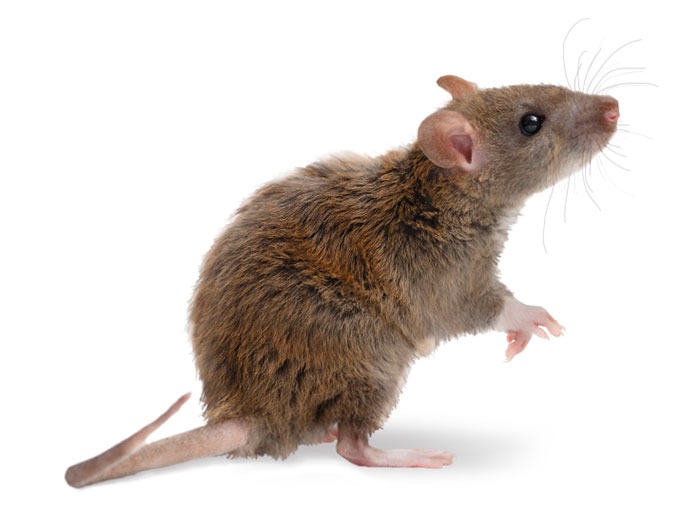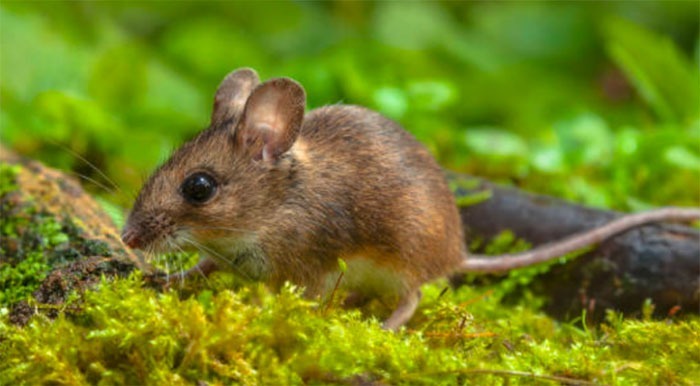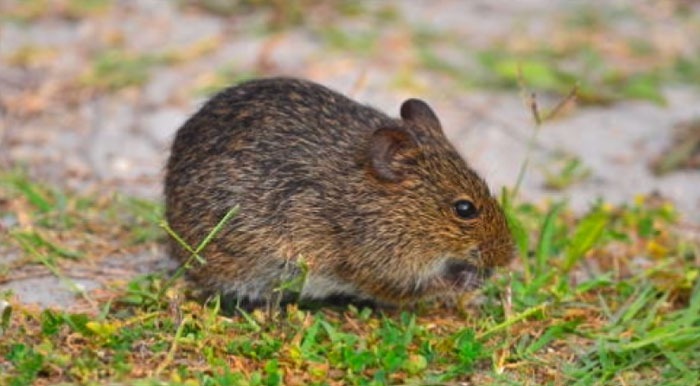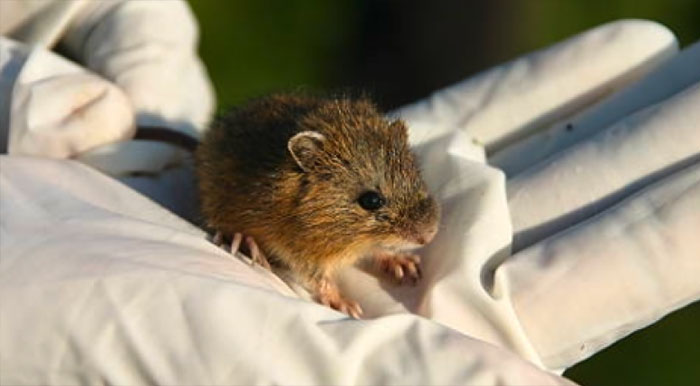
With more than 1,000 species found throughout the world, mice are among the most common mammals in the northeastern United States. These small, prolific creatures are mainly found in the wild. Some are used in research labs while others are kept as household pets.
Mice are small rodents, measuring anywhere from four to seven inches in length and weighing 1/2 ounce to three ounces. Despite their round, furry bodies they have large ears, a pointed nose and a long, usually hairless, tail. Mice range in color from brown and gray to white.
The mice species prevalent in the northeastern United States are the Field Mouse, House Mouse, Eastern Deer Mouse, White-footed Deer Mouse, Meadow Jumping Mouse and Woodland Jumping Mouse.
When mice seek shelter in your home it is because they are seeking the three main conditions they need to thrive and survive:
- Warmth in extreme cold
- A place to nest
- Consistent food source
Mice belong to the Rodential family which is why they’re called rodents. Their fellow rodents include rats, hamsters, guinea pigs, voles, beavers, muskrats, porcupines, woodchucks, chipmunks, squirrels, prairie dogs, marmots, chinchillas and lemmings. Their distinctive feature is that they all have a continuously growing pair of incisor teeth.
Types of Mice in Pennsylvania, New Jersey and Delaware

Field Mouse
(Apodemus sylvaticus)
The field mouse, sometimes called a meadow vole, is 3-4” in length. Their fur is reddish-brown on their back with gray and white bellies and a line of yellow fur across their chests. They prefer to live outdoors, primarily in fields of grass and wooded areas. They will seek shelter in homes, sheds and outbuildings only in winter weather so extreme they might not survive without shelter. Their primary diet consists of seeds and berries.

House Mouse
(Mus musculus)
The house mouse is a common mouse species that can be found on every continent except for Antarctica. They are 5-8” long when measured from nose to tail with gray or brown fur. True to their name, they appear to prefer cohabitation with humans. They are omnivores, eating mainly insects, plants, berries, nuts and seeds. Unfortunately, in addition to being the source of destruction of property and food, house mice also carry diseases harmful to humans, like hantavirus and salmonella.

Eastern Deer Mouse
(Peromyscus maniculatus)
The eastern deer mouse can grow to 5-7” in length from nose to tail. Their fur can be light gray or a reddish brown with white bellies. Their tail is bi-color and short-haired, much like the white-footed mouse, except the eastern deer mouse has longer back feet and a longer tail. They can be found throughout North America and parts of Central America, preferring to live in wooded areas but will seek shelter in harsh weather. They too carry diseases such as hantavirus as well as lyme disease.

White-footed Deer Mouse
(Peromyscus leucopus)
The white-footed deer mouse also makes their home in warm, dry outdoor environments. They can often be found in forests and areas with low brush, where they will stay unless weather conditions become unbearable. Unlike house mice, the white-footed deer mouse stores food each winter, making them less likely to seek shelter indoors. They grow to 5-8” from nose to tail and, like the eastern deer mouse, have reddish-brown bodies with white bellies, white feet and a bi-color tail that is dark on top and light on the underside.

Meadow Jumping Mouse
(Zapus hudsonius)
The meadow jumping mouse lives in open fields and areas with low grass, near a water source like streams or marshland. They have longer, coarse fur that is yellow-orange on the side with a dark brown band down the center of their back, a white or pale yellow belly and tufts of black hair on their back and the tip of their tail. They grow to 7-9” and their tail is nearly 1-½ the length of their body. Their extra-long hind feet allow them to jump great lengths to avoid predators.

Wooded Jumping Mouse
(Napaeozapus insignis)
The wooded jumping mouse is similar to the meadow jumping mouse in appearance and behavior. It also has coarse fur with orange markings, a brown band along the back, white belly and feet and tufts of black hair on the back. Growing as long as 8-10” from nose to tail, the wooded jumping mouse also has elongated back legs that allow it to jump away from danger. The difference is in habitat, with this mouse opting to live in wooded areas.
Signs of an Infestation
Mice will usually only set up house in your home during colder months since they are seeking shelter and food sources due to extreme winter temperatures and weather conditions.
Due to their size and ability to squeeze themselves through tight spaces, it’s pretty easy for mice to enter homes, no matter how well secured they are.
Mice are nocturnal, so you likely won’t see them during the day but they will leave telltale signs:
- Mouse droppings (look for something resembling black rice)
- Signs of a mouse nest
- Chewed wood, plastic or food packaging and contents
- Tracks/footprints in dust from chewed materials or food
- Sounds of scurrying in walls
Health and Damage Considerations
Some consider mice to be cute, harmless creatures but they damage property and spread disease.
Because their incisor teeth are constantly growing, rodents will gnaw on nearly anything to shorten those front teeth, including wires, plastic materials, furniture, books, wood, and beyond. This destruction poses the risk of electrical fires or other structural damage.
They pose a health risk to people and animals through the many diseases they carry:
- Salmonella (food poisoning)
- Hantavirus
- Lassa Fever
- Leptospirosis
- Lymphocytic Chorio-meningitis
- Plague
- Rat-bite Fever
- Hemorrhagic Fever with Renal Syndrome
They are also carriers of Lyme disease through the fleas and ticks that can be found on their fur.
Behavior
Mice are communal mammals who live in a hierarchical society. They will defend their territory if threatened. Much of their behavior is pheromone driven. Mice are nocturnal mammals who will remain in their current habitat except in the extreme cold conditions of the winter season. They will adapt, seeking warmth and shelter to build a nest in a location with ample food sources. This is why many households experience mouse infestations in the winter months.
Habitat
Mice can be found all over the globe. The various species of mice thrive in many different settings, from forests to marshland, meadows to homes. Mice prefer suburban and rural areas as opposed to their rat cousins, who choose an urban habitat. Mice will generally choose being close to humans due to the potential for needed shelter and food. In the wild, mice will create their nest by burrowing into the ground. This helps protect them from their main predators: cats, foxes, wild dogs and birds.
Lifecycle
Mice live between two and seven years. Female mice begin mating as early as when they are four to seven weeks old. They have a short gestation period of only 19-21 days and can produce new litters every three weeks, which is why their populations are so prolific. Mice litters can result in four to twelve pups.
Feeding
Mice are omnivores, eating a diet of plants, meat, fruits, seeds, insects, bark, fungus and grains. If hungry enough, a mouse will eat nearly anything to survive. This includes – in extreme cases of hunger and food scarcity – eating each other.





